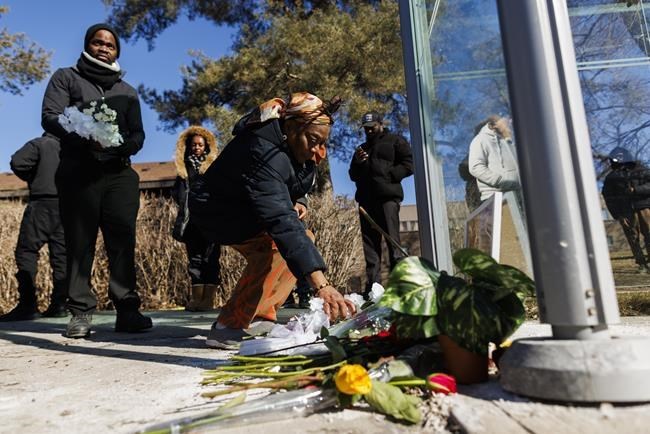TORONTO — For a Toronto community once notorious for crime and the influence of organized gangs, two shootings this month targeting innocent victims at the same spot, less than 24 hours apart, were more than just a chilling outbreak of indiscriminate violence.
The shootings that killed a newcomer to Canada supporting four children in Ghana and critically injured a 16-year-old boy also marked a setback for the neighbourhood around Jane and Finch, whichcommunity workers and experts say has made progress in addressing its reputation as one of Toronto's most troubled areas.
Police have said that gun violence in the northwest Toronto area "was at a 10-year low" last year.
"The minute any type of incident happens, it's almost like all of that work becomes undone," said Abdul Nur, 28, an outreach worker at the Jane/Finch Community and Family Centre.
Jane and Finch emerged as a bustling Toronto neighbourhood in the 1960s, when a series of highrise apartments were constructed and immigrant families began moving in, said York University professor Carl James, who has been studying the intersection and its surrounding community for nearly two decades.
Over the following decade, a lack of services and a government failure to support low income families bred social unrest in the area, said James, a sociologist whose work in part specializes in how racism and inequity impact Black communities.
James said his research has shown that negative perceptions of Jane and Finch have made it harder for some young people from the area to secure jobs and other opportunities, leading some to try to distance themselves from the community.
"Young people in particular are always very concerned about how that community might brand them when they go to school, when they're thinking about employment possibilities," he said.
Delux Yogarajah, who also works at the Jane/Finch Community and Family Centre as a youth violence prevention co-ordinator, said that while the community was "grieving" after the shootings, "this act of violence doesn't define us."
"The whole 'Jane and Finch is violent' perspective is untrue," he said, voicing concern about the types of messages youths have been confronted with in the aftermath of the shootings.
"They are ... reading about the shootings in the Jane and Finch area on social media with certain words that have been used to stigmatize the community in the past ... so it does put youth on edge a lot more," he said.
Nur added that "labels are attached with no implications or understanding of what that means for residents and youth in the area."
"We do continue to let them know these are isolated incidents and that they are always safe within their own community despite the stigma," Nur said.
On Saturday, residents gathered at Jane Street and Driftwood Avenue to honour Adu Boakye, 40, who sustained fatal gunshot wounds near that intersection on Feb. 17.
Friends of Boakye described him as a quiet man, who was working hard to support his family in Ghana.
The other victim, a 16-year-old shot a day prior while waiting for the bus to go to a volleyball game, was critically injured but survived.
Police have said the attacks were carried out randomly by the same suspect or suspects. They said the victims didn't know each other or the suspect, nor were they involved in gang activity or anything similar.
No arrests have been made.
James, of York University, raised concern about any discussion of the shootings that suggests "this is common in the Jane Finch neighbourhood."
"It's fair to report shootings as incidents that the community abhors," he said.
"But when we are (talking about them) as if this is a normal expectation of that community, then that's unfair."
Toronto police spokeswoman Stephanie Sayer described the shootings as "concerning."
"But it is important to note that in 2023, gun violence in the community was at a 10-year low, supported by a proactive police presence and disruption of gun and gang violence," she said in an email.
Community leaders have credited an increase in afterschool programming for youth, more police presence and more lights around apartment complexes as factors that have helped reduce violence.
Yogarajah said the community centre will continue to support residents in the days ahead.
"Jane and Finch is a very close-knit community," he said. "So we're still trying to understand everything that's going on."
This report by The Canadian Press was first published Feb. 27, 2024.
Fakiha Baig, The Canadian Press

